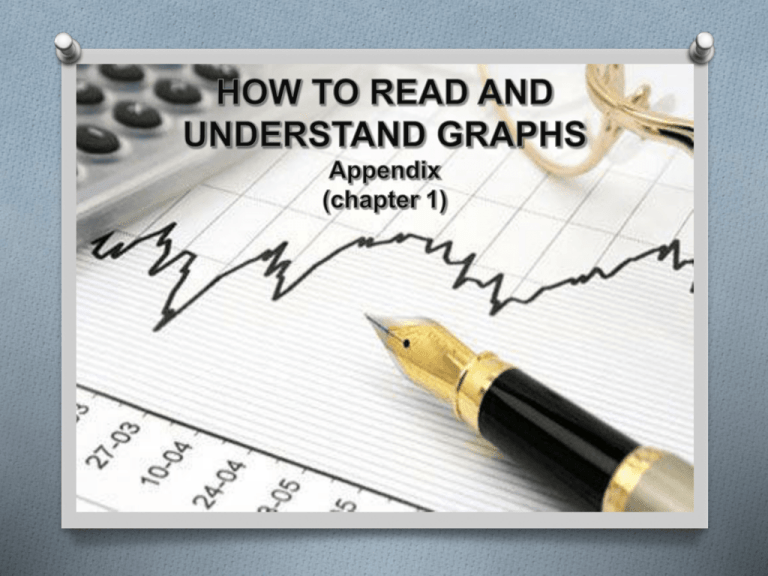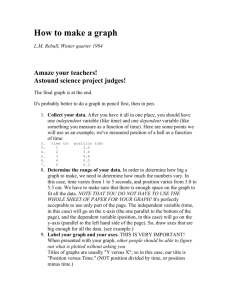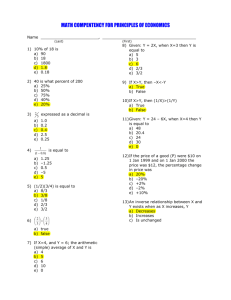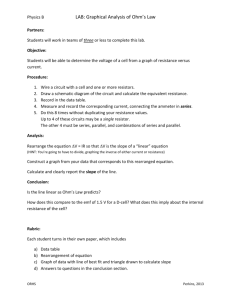graph
advertisement

A graph is a two-dimensional representation of a set of numbers, or data. TIME SERIES GRAPH A time series graph shows how a single variable changes over time. GRAPHING TWO VARIABLES ON A CARTESIAN COORDINATE SYSTEM The Cartesian coordinate system is the most common method of graphing two variables. This system is constructed by simply drawing two perpendicular lines: a horizontal line, or X-axis, and a vertical line, or Y-axis. The axes contain measurement scales that intersect at 0 (zero). This point is called the origin. On a Cartesian coordinate system, the point at which the graph intersects the X-axis is called the X-intercept. The point at which the graph intersects the Y-axis is called the Y-intercept. The dotted line does not represent any data. Instead, it represents the line along which all variables on the X-axis correspond exactly to the variables on the Y-axis, for example, (10,000, 10,000), (20,000, 20,000), and (37,000, 37,000). This line connecting all the points where consumption and income would be equal. The heavy blue line traces the data; the purpose of the dotted line is to help you read the graph. The slope of the line indicates whether the relationship between the variables is positive or negative. This line slopes upward, indicating that there seems to be a positive relationship between income and spending. Points A and B, above the 45° line, show that consumption can be greater than income. The slope of the line is computed as follows: Y2 Y1 Y X X 2 X1 An upward-sloping line describes a positive relationship between X and Y. A downward-sloping line describes a negative relationship between X and Y. Changing Slopes Along Curves Unlike the slope of a straight line, the slope of a curve is continually changing. Figure 1A.5(a) shows a curve with a positive slope that decreases as you move from left to right. Figure 1A.5(c) shows a curve with a negative slope that increases (in absolute value) as you move from left to right. In Figure 1A.5(e), the slope goes from positive to negative as X increases. In Figure 1A.5(f), the slope goes from negative to positive. At point A in both, the slope is zero.






